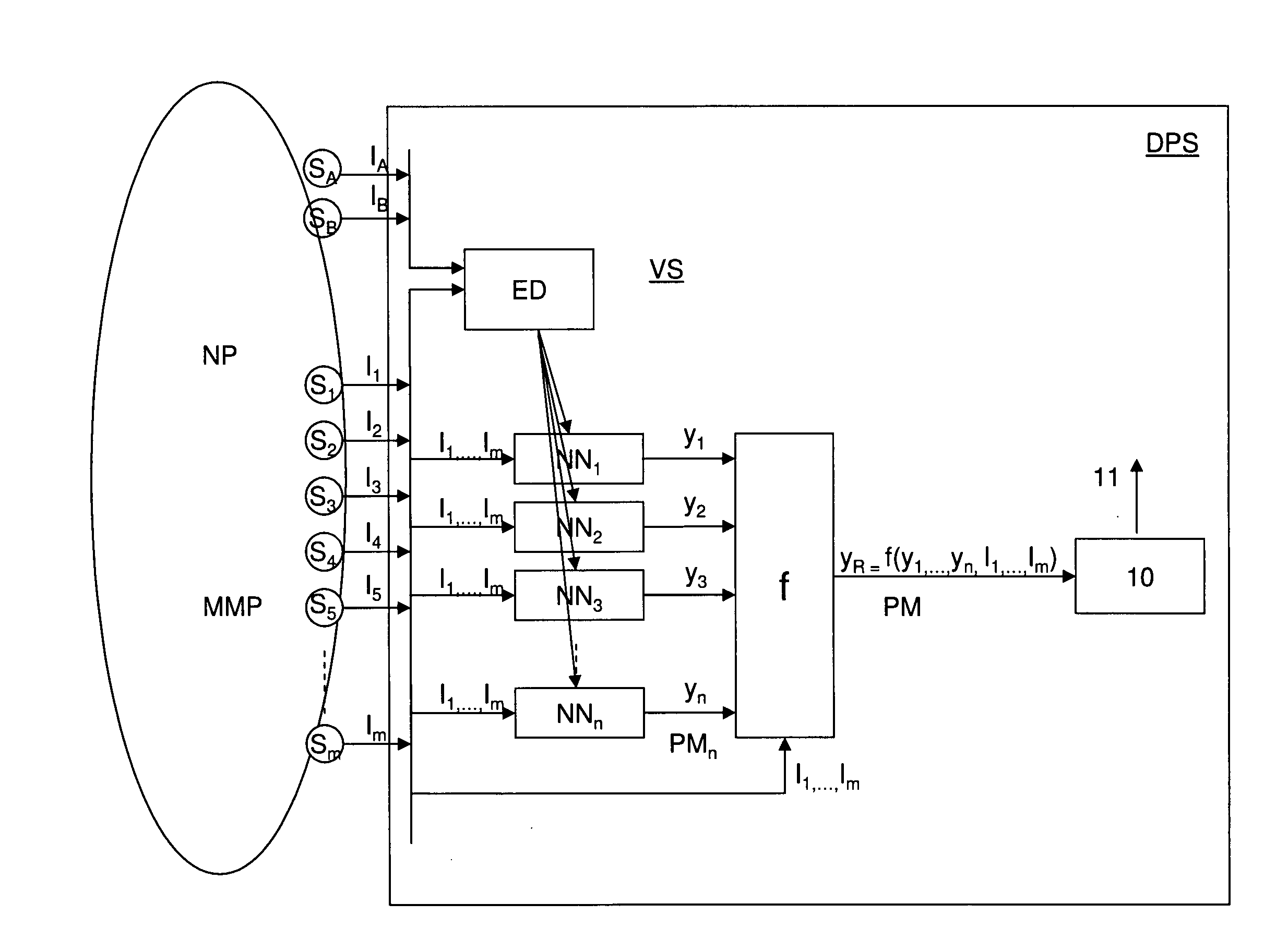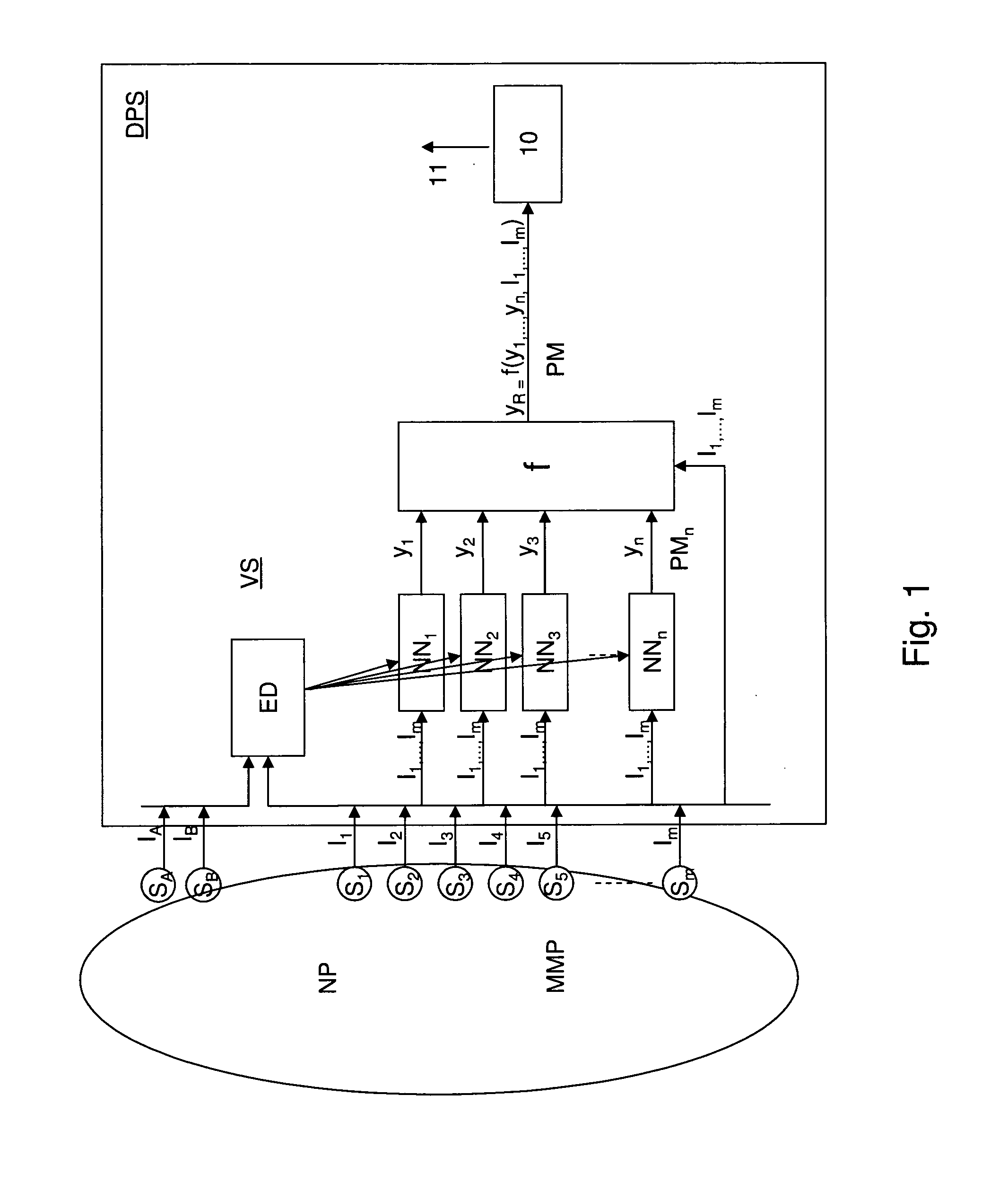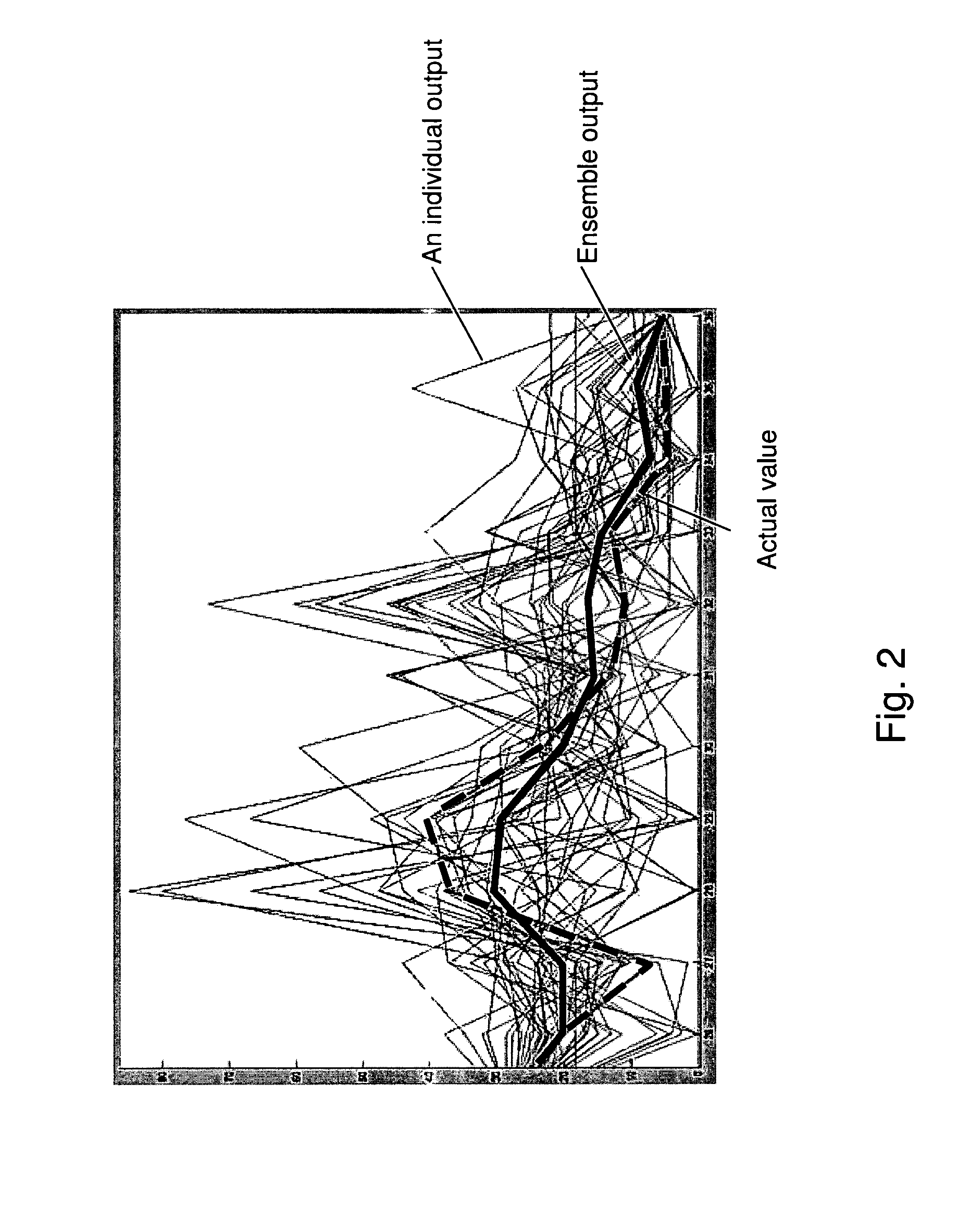System and method for empirical ensemble-based virtual sensing of particulates
- Summary
- Abstract
- Description
- Claims
- Application Information
AI Technical Summary
Benefits of technology
Problems solved by technology
Method used
Image
Examples
Embodiment Construction
[0080]FIG. 1 is a block diagram of an embodiment of a virtual sensor system according to the present invention used to measure the air quality, and more specifically the amount or concentration of particulate matter (PM). Examples of sources for particulate matter (PM) may be natural processes (NP) such as e.g. volcanoes, dust storms, fires, or man made processes (MMP) such as e.g. combustion processes for transport and various production processes.
[0081]According to the invention the concentration of particulate matter (PM) can be estimated measuring a combination of two or more parameters from different processes influencing the air quality, and specifically particulate matter (PM), such as meteorological processes, demographics, time of day, traffic concentration etc. In areas where industry is contributing to pollution, combustion process measurements directly related to each combustion process may be used as input parameters for the estimation of particulate matter (PM).
[0082]I...
PUM
 Login to View More
Login to View More Abstract
Description
Claims
Application Information
 Login to View More
Login to View More - R&D
- Intellectual Property
- Life Sciences
- Materials
- Tech Scout
- Unparalleled Data Quality
- Higher Quality Content
- 60% Fewer Hallucinations
Browse by: Latest US Patents, China's latest patents, Technical Efficacy Thesaurus, Application Domain, Technology Topic, Popular Technical Reports.
© 2025 PatSnap. All rights reserved.Legal|Privacy policy|Modern Slavery Act Transparency Statement|Sitemap|About US| Contact US: help@patsnap.com



